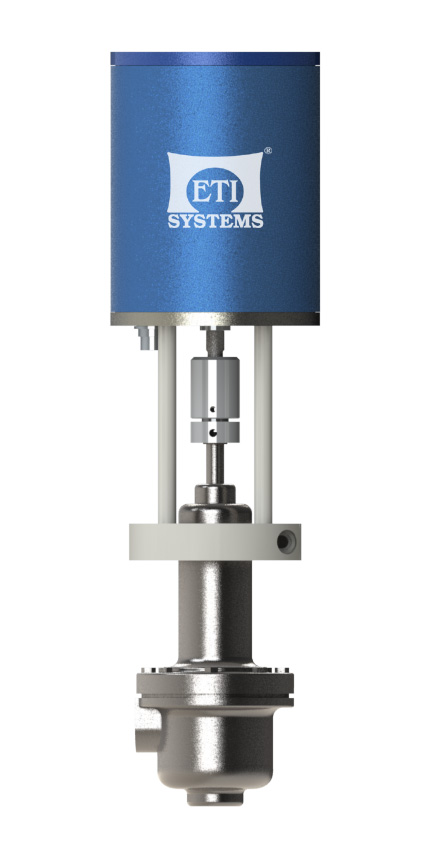Modern fluid systems succeed when control moves are precise, repeatable, and easy to maintain. ETI Systems develops components that meet these needs in real plants, not just on paper. Our focus is steady motion, trusted feedback, and long service life, so teams can keep lines running and quality consistent.

Across water and wastewater, chemical dosing, food and beverage, and HVAC, our electric solutions help operators hold setpoints and reduce unplanned work. The goal is simple: choose a Valve Actuator that reaches position smoothly, stays there under load, and keeps doing so through heat, vibration, and washdown.
Great performance starts with parts and protections that hold up in the field. We design each valve actuator so it moves smoothly today and stays accurate after years of plant duty.
Start with protection against the elements. Gaskets, shafts, and housings are selected for moisture and dust resistance, with sealing that preserves accuracy over time. This keeps contaminants away from bearings and gears, so motion remains smooth and repeatable through years of duty.
Accurate loops need honest position data. We pair the drive train with verified feedback options such as a potentiometer, Hall sensor, or encoder, chosen to fit your stability requirements and calibration routine. The result is a control signal your PLC can rely on during starts, stops, and fine adjustments.
Performance must hold when work is constant. Designs are sized for expected cycle profiles, with thermal capacity that prevents drift and nuisance trips during long modulating runs. This keeps travel consistent and protects internal components from avoidable heat stress.
Commissioning should be quick and repeatable. Standard signal interfaces, clear limit and torque settings, and simple on-bench tests help teams verify behavior before the unit reaches the line. Built-in checks make it easy to spot wiring issues or travel faults during maintenance rounds.
Conditions change, control should not. Our engineering protects motion and feedback so your setpoints stay steady in tough sites.
Plants with washdown or outdoor exposure need robust barriers. Ingress protection, corrosion-resistant materials, and proper strain relief keep water and debris out, helping the actuator hold calibration after cleaning cycles and storms.
Thermal swings and vibration can cause drift. Mechanical design, fasteners, and verified temperature ranges help the actuator maintain position across seasonal changes and near rotating equipment. This stability reduces retuning and extends service life.
Some areas carry fumes or fine particulates. Surface finishes and sealed enclosures shield critical parts from corrosive or abrasive media. This preserves the smooth response that control loops depend on.
Control integrity depends on clean signals. Grounding, shielding, and noise-aware routing help prevent false readings and feedback mismatch. Operators see clear diagnostics rather than intermittent alarms.
See how teams apply ETI actuators to common fluid control problems. Each snapshot shows choices that protect accuracy, uptime, and maintenance time.
Treatment skids require quiet, precise modulation. An electric valve actuator with verified feedback maintains flow through media beds while keeping alarms low. Crews appreciate quick calibration checks after cartridge or valve service.
Recipe changes demand small position steps and repeatable returns. A proportional actuator supports fine adjustments during batching and CIP, helping teams hit targets without extended tuning.
Dosing lines benefit from smooth starts and predictable stops. Feedback stability and thermal capacity allow frequent micro‑moves without drift, so the control system holds pH within tight bands during load swings.
Turn your requirements into a clear choice. Use this checklist to map torque, stroke, signals, duty, and environment to the valve actuator that will hold position and last.
Document torque or thrust across the full stroke and account for seating force and process pressure. Add margin for sticky seals and viscosity changes so the valve actuator reaches the position without strain.
Pick feedback to suit loop stability and your calibration plan. Align on/off or proportional signals with available I/O, then verify scaling and update rates to keep readings steady.
Select ingress protection, materials, and temperature range to match site conditions. Confirm duty cycle and thermal behavior during long modulating runs so performance stays consistent on hot days and cold starts.
Record a baseline response during commissioning and keep common spares on hand. Simple visual checks and periodic calibration protect uptime and make audits easier.
ETI Systems designs and manufactures precision control components for industrial automation. Our portfolio includes industrial joysticks, single-turn and linear motion potentiometers, and electric valve actuator solutions for fluid control. We engineer for steady motion, trustworthy feedback, and long service life, validating materials, sealing, and temperature performance so plants and OEMs can count on stable, repeatable control.
When your process requires a reliable valve actuator, we assist you in matching torque, travel, feedback, and signals to suit your specific site and valve needs. Our options include both on/off service and proportional control in rotary and linear formats, with feedback choices tailored to your calibration routine. Clear documentation and straightforward setup facilitate quick commissioning, and our sealing and verified temperature ranges ensure that each unit maintains its calibration between scheduled services.
It converts control signals into repeatable motion, helping the valve reach a position smoothly and hold it under load. This steadiness keeps flow, pressure, or temperature within target bands.
Look for proven ingress protection, corrosion-resistant materials, verified temperature ranges, and sound grounding practices. These features protect internal parts and preserve accuracy.
Potentiometer, Hall sensor, and encoder each fit different calibration habits and accuracy needs. Match the option to loop stability requirements and the service routine your team can maintain.
Choose proportional control when the process needs fine positioning and a steady setpoint. It helps the valve land between open and closed without cycling.
Use proportional control if:
Document torque or thrust through the entire stroke, add margin for process changes, and confirm duty cycle and thermal behavior. Proper sizing protects gears, motors, and bearings over time.
Ready to match a valve actuator to your process?
Share your valve, signal, and environment. We will help you select an ETI Systems model that holds position, simplifies service, and supports stable control.